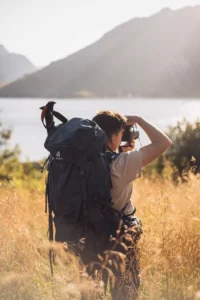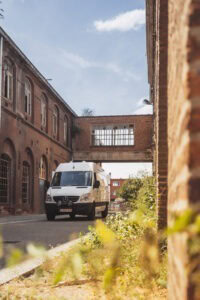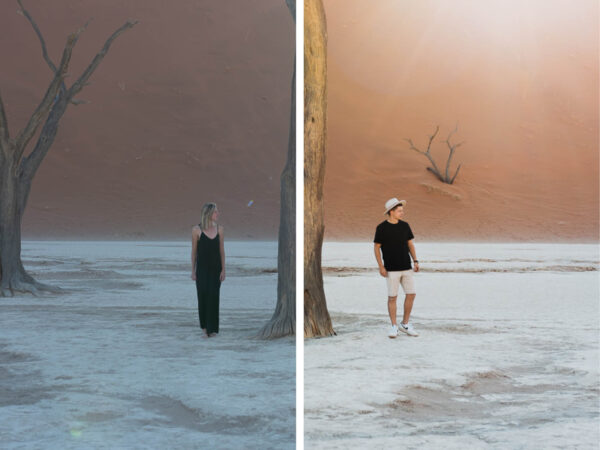Overview
This post may contain affiliate links, which means we may receive a small commission, at no extra cost to you, if you make a purchase through our link.
This is a free way to support us and allows us to continue creating even more inspiring travel guides. Thank you for supporting the love we put into Coordinotes!
Best things to do in Malta
Malta has a bit of everything, and that’s what makes it so fun to explore. You’ve got small towns with good food and quiet streets, cool spots for swimming, old forts and temples, and easy boat trips to places like Gozo and Comino.
We recommend spending at least three days on the island to get a good feel for it. If you plan to visit the other islands too, it’s worth adding another one or two days. Let’s dive into our favorite things to do in Malta!
Fun Fact: Did you know that the landscapes in Malta are so cool and dramatic that they’ve been used as film sets for movies and series like Gladiator, Troy, and Game of Thrones?

1. Valletta
Of course, visiting the capital is one of the best things to do in Malta. Valletta is small but full of charm, with sunny streets, colourful balconies, and big old churches everywhere you look. The city is even listed as a World Heritage Site. It’s the kind of place where you can just walk around with no plan and still find nice cafés, quiet little squares, and amazing sea views.


If you want to learn more about the city, a walking tour is a fun way to do it. You’ll hear the stories behind the buildings and notice things you might miss on your own. After that, grab a pastizz, visit the St. John’s Co Cathedral, and head to the Upper Barrakka Gardens. The view over the harbour is one of the best in Malta.

No time to read now?
Save this post on Pinterest!

2. Mdina



The narrow streets of Mdina twist and turn, and the old doors and balconies, sometimes decorated with flowers, look like they’ve come straight out of an idyllic painting. We recommend going in the late afternoon and staying into the evening. As the sun starts to set, the warm light makes the whole city glow in the most magical way.
For dinner, there are a few lovely spots hidden inside the city walls. We ate at The Knight’s Kitchen and sat on the rooftop, enjoying tasty food and a beautiful view.

3. Marsaxlokk
Marsaxlokk is a little fishing village, known for its colourful boats, called luzzus, that float around in the harbour and make the whole place feel like a postcard. It’s a great spot to stroll along the waterfront and check out the market stalls.


On a Sunday morning, the fish market is at its busiest. It can get a bit crowded, and the smell is… let’s just say very fishy, but the vibe is fun and the seafood couldn’t be fresher. For lunch, grab a table at one of the restaurants by the water and try some grilled fish or octopus. It’s simple, local, and exactly what you need after a sunny walk through town.

4. St. Peter's Pool
St. Peter’s Pool is one of the most popular swimming spots in Malta, and for good reason. The water is super clear, the cliffs are great for jumping, and the whole place feels like a natural swimming pool carved into the rock. It’s a fun spot to hang out, swim, and tan in the sun.

But getting there can be a bit of an adventure. The road is really narrow, and parking is limited, especially in the middle of the day. In high season, it’s almost impossible to find a spot, and turning your car around on that tiny road isn’t exactly relaxing. And that’s before you even get to the crowds at the pool itself.
So if you’re visiting in summer, go early in the morning. Or better yet, plan your trip in the shoulder seasons when it’s quieter and easier to enjoy the place without the chaos.
5. The Three Cities
The Three Cities, Birgu, Senglea, and Cospicua, are just across the water from Valletta and have a bit more local, laid-back vibe. You can get there by ferry or take one of the traditional dgħajsa boats. We highly recommend the traditional Maltese boat if you can. It costs €3 per person for the short crossing and is a fun little experience on its own. If you enjoy the ride, you can also do a 30-minute harbour tour for €10 per person.


Birgu, also known as Vittoriosa, is the oldest of the three and was actually Malta’s capital before Valletta took over. It’s full of quiet alleys, historic buildings, and beautiful old churches. From Senglea, you can enjoy the view over the Grand Harbour from the Gardjola Gardens. It’s one of the best photo spots in the area.

In the evening, you can have dinner at the Birgu or Senglea waterfront while watching the sailboats and yachts in the harbour. There are plenty of restaurants along the marina, and the setting is peaceful, especially as the sun starts to go down.

6. Temples of Mnajdra and Hagar Qim
The temples of Mnajdra and Ħaġar Qim are some of the most impressive historical sites in Malta, and also some of the oldest in the world. They date back to around 3600 BC, which makes them older than the pyramids of Egypt and Stonehenge. It’s pretty amazing to stand in front of something that has been around for more than 5,000 years.

You’ll find the temples on the south coast of Malta, in a beautiful spot overlooking the sea. Ħaġar Qim is the larger of the two, with massive stone blocks that weigh over 20 tons. Mnajdra is known for its clever design and the way it lines up with the sun during the spring and autumn equinox.
Practical
Adults: €10.00
Students: €7.50
Daily open from 9:00 am until 7:00 pm.
7. Ħal Saflieni Hypogeum
The Ħal Saflieni Hypogeum is an underground burial site carved entirely out of rock, and it’s believed to be over 5,000 years old. That’s around the same age as the temples, but this one goes three levels deep underground.
What makes the Hypogeum extra special is how well it’s been preserved. You walk through narrow passageways, chambers, and stairs that were all cut by hand, with some rooms showing red ochre wall paintings that are still visible today.
Because it’s so delicate, only a small number of visitors (80) are allowed in each day. You have to book tickets well in advance, sometimes weeks ahead, especially during high season.
Practical
Adults: €35.00. Get your tickets here.
Last Minute Tickets: €50.00 (one day before visit)
Daily open from 10:00 am until 6:00 pm.
8. Rabat
Rabat was once part of the Roman city of Melite, and today it’s known for its underground catacombs and strong local character. It is located right next to Mdina, but feels less polished and more lived-in. One of the main sights here is St. Paul’s Catacombs, a large underground burial site with tunnels, chambers, and carved stone tombs that date back to Roman times. During World War II, parts of the catacombs were also used as air-raid shelters, which you can still see today. It’s cool (literally), a bit eerie, and interesting to walk through.



9. Beaches and bays
Malta doesn’t have a lot of sandy beaches, but there are still some great places to swim and relax by the sea. Most of the coastline is rocky, which means clear water and plenty of cool spots to jump in.
Golden Bay is one of the most popular sandy beaches and great for swimming or just spending a lazy afternoon. Nearby, Għajn Tuffieħa is a bit quieter and has more of a natural feel. Għadira Bay (Mellieħa Bay) is the biggest sandy beach and perfect for shallow, family-friendly swimming.

St Julian’s Bay is more about the vibe, with lots of restaurants and spots where locals jump in from the rocks. It’s a fun place for a quick swim and a drink by the water.
And yes, St Peter’s Pool is another favourite, but we already talked about that one earlier.
10. Popeye Village
Popeye Village is one of the quirkiest places to visit in Malta. It was built as the film set for the 1980 movie Popeye, starring Robin Williams, and was never taken down. Today, it’s been turned into a small theme park with colourful wooden houses, shows, and activities, mainly aimed at families with kids.


The entrance fee is €25, which might be a lot if you’re just curious to stroll through the old set. The good news? You can admire the whole village from the opposite side, over at Anchor Bay, and some viewpoints higher up. The view is great for photos, and the bay itself is a lovely spot for a swim if you want to cool off without going into the park.
11. Gozo
Gozo is Malta’s smaller neighbour and definitely worth a visit while you’re on the islands. It’s quieter than the main island, with a slower pace, pretty villages, and lots of open space. You’ll find beaches, cliffs, countryside views, and some impressive sights like the Citadel in Victoria and the Ta Pinu Basilica. You can easily spend a full day here exploring, especially if you want to take your time and see more than just the highlights.

You can get to Gozo by ferry, either with or without a car. The car ferry runs regularly from Ċirkewwa in the north of Malta and only takes about 25 minutes. From Valletta, you can hop on the passenger ferry, which takes about 45 minutes. If you want to explore more than just one area, bringing a car is handy, but there are also buses and tours that cover the highlights.


Gozo is great for a day trip, but if you have more time, spending a night or two lets you see the island when the day-trippers have gone and everything slows down even more.
12. Comino
Another island to visit in Malta is Comino, the smallest of the three islands. It’s almost completely uninhabited, with no towns or cars, and just a few buildings like the old watchtower and a tiny chapel. Most people come here for the Blue Lagoon, a shallow bay with unbelievably clear turquoise water. It’s great for swimming, snorkeling, or just floating around and doing nothing at all.
13. Scuba Diving
If you’re into scuba diving, Malta is one of the best places in Europe to do it. The sea is clear, the visibility is great, and there are plenty of dive sites around Malta, Gozo, and Comino. You’ll find natural tunnels, caves, arches, and lots of shipwrecks to explore, including some from World War II and others that were sunk on purpose for divers.

Even if you’ve never tried diving before, this is a great place to give it a go. The conditions are beginner-friendly, and there are plenty of shallow sites to start with.
If you are looking for a great and trustworthy diving center, we can highly recommend Malta Blue Diving. Their team is friendly, professional, and knows the island’s dive spots inside out.
14. Dingli Cliffs
The Dingli Cliffs are the highest point in Malta and one of the best places to take in the island’s dramatic beauty. The cliffs are located along the west coast and rise about 250 metres above sea level. You get a wide view over the sea and the small island of Filfla in the distance.


There’s a marked viewpoint, known as Dingli Cliffs Viewpoint, where you get a magical view over the edge of the cliffs and, if you time it right, an incredible sunset. There’s even a natural rock window nearby that frames the view perfectly. It’s a peaceful spot with not much around apart from a small chapel and the sea below, but that’s what makes it such a nice break from the busier parts of the island.
15. Rotunda of Mosta
Another place in Malta that made our jaws drop was the Rotunda of Mosta, or Mosta Dome. It’s known for its massive dome, which is one of the third-largest unsupported domes in Europe. From the outside, it already looks huge, but once you step inside, it’s even more striking.

One of the most famous stories linked to the church is from World War II. In 1942, a bomb was dropped during a service with hundreds of people inside, but it didn’t explode. Locals still call it the “miracle of Mosta,” and you can see a replica of the bomb on display in the church.

The Rotunda is located right in the middle of Mosta and is easy to combine with a visit to nearby places like Mdina or Rabat. Even if you’ve already seen a lot of churches in Malta, this one is worth a stop just for the size and the story.
16. Il Gnient ta' Sant 'Anton
Il-Ġnien ta’ Sant’Anton, or San Anton Gardens, is one of those places that’s perfect when you need a break from the sun and the crowds. It’s in the middle of Attard and feels like a little green escape, with shady paths, fountains, peacocks, and ponds filled with turtles, ducks, and swans. It’s free to enter, and a lovely place for a slow stroll.


The gardens were once part of the Grand Master’s palace, which is now where the President of Malta lives. Some of the trees were planted by visiting presidents and royals, and you’ll spot little plaques with their names along the way.

17. Coral Lagoon

18. Maltese Wineries

19. Blue Grotto
The best way to see it is by taking a short boat tour from the nearby harbour in Wied iż-Żurrieq. The boats are small and the ride is quick, but you get to see the main arch and several smaller caves from the water. The colours are especially clear in the morning, so that’s the best time to go if you can.
You can also enjoy the view from above at the viewpoint just up the hill. It’s an easy stop with a great photo spot, even if you don’t have time for the boat trip
20. Manoel Island

21. Try local Maltese food & drinks



Where to stay in Malta
Malta isn’t huge, so no matter where you stay, you’re pretty close to everything. That said, the best areas to stay in Malta each offer something a little different, so it’s worth thinking about what kind of vibe you’re after.
Valletta is a great base if you want to explore on foot, be close to museums, historic sites, and have lots of food and ferry options nearby. We stayed in the centre of Valletta at Mulberry Suites. It wasn’t anything special, but it had everything we needed: clean, quiet, and super central. We could walk to pretty much everything within Valletta.
Sliema and St Julian’s are livelier and more modern, with a bigger mix of restaurants, bars, and shops. St Julian’s is the nightlife hub, while Sliema is great for coastal walks, swimming spots, and easy boat trips. These areas are more built up, but also well connected by bus and ferry.
If you’re looking for a quieter or more local feel, places like Rabat, Mdina, or the south of the island near Marsaxlokk can be nice. You’ll be a bit further from the big tourist areas, but get more peace and a slower pace.
How to get to Malta
Malta has its own international airport, so getting there is easy, especially if you’re coming from Europe. Malta International Airport is just a short drive from Valletta. There are plenty of direct flights from major cities, including options with low-cost airlines.

Once you land, you can take a taxi, a ride-share app like Bolt or eCabs, or hop on a bus to reach your hotel. Taxis are the fastest but more expensive, while buses are cheaper and still fairly easy. If you’re already in Sicily, you can also reach Malta by ferry, with routes running from places like Pozzallo and taking around 1.5 to 2 hours.
How to get around
Getting around Malta is easy, thanks to its small size. The public buses go almost everywhere and are budget-friendly, though they can be slow and crowded in high season.
Renting a car gives you more freedom, especially if you want to visit beaches or rural spots, but parking can be tricky, and they note that they drive on the left side. We rented our car through rentalcars.com and everything went very smoothly.

In towns like Valletta, walking is often the best option, and ferries are a fun and easy way to reach places like Sliema, the Three Cities, Gozo, or Comino.
If you’re planning to explore a lot, we highly recommend renting a car. If you’re staying mostly in one area, buses and ferries will do the job.
Best time to visit
The best time to visit Malta is in spring (April to early June) and autumn (late September to October). The weather is warm, the sea is great for swimming, and it’s not too crowded. Perfect for sightseeing, beach days, and outdoor activities without the summer heat.
Summer (July and August) is the busiest and hottest time of year. It’s great for sun and sea, but popular spots can get packed, and temperatures often hit 35°C or more.
Winter (November to March) is mild and quiet with more rainy days. It’s not beach weather, but it’s a good time for walking, visiting towns and museums, and seeing the island without the crowds.

Win-Win for everyone
Did you know that, if you buy or book something through our links, we receive a small commission?
However, you still pay the same and therefore have no extra costs! So a win-win for everyone. This way, we can continue to add even more travel inspiration and tips to this blog for your next adventure. Thanks a lot!
Thank you for visiting our blog
We hope you find our free travel guides and tips useful. If you want, you can support us virtually by ‘buying us a coffee‘.
Every contribution, no matter how small, is greatly appreciated and will help us continue to share our passion with you and grow this blog.
Win-Win for everyone
Did you know that, if you buy or book something through our links, we receive a small commission?
However, you still pay the same and therefore have no extra costs! So a win-win for everyone. This way, we can continue to add even more travel inspiration and tips to this blog for your next adventure. Thanks a lot!




